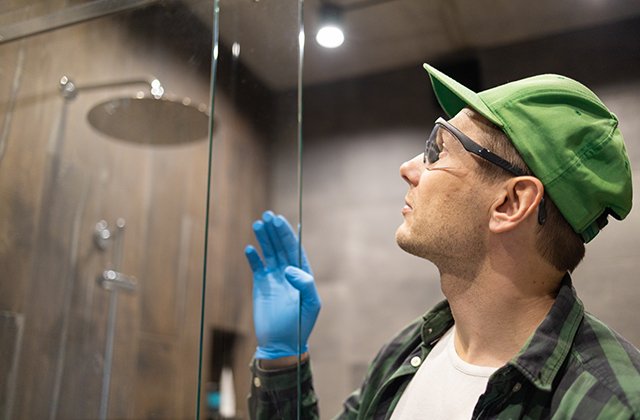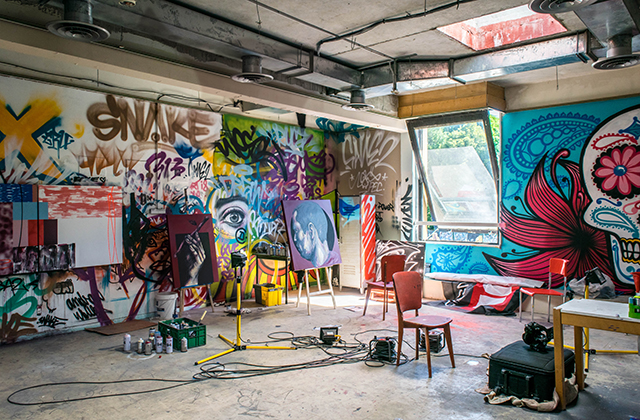When it comes to home improvement projects, few tasks are as delicate and intricate as bonding glass to glass. Whether you’re looking to repair a broken window, create a custom glass display case, or undertake a DIY craft project, understanding how to effectively and permanently adhere glass pieces is essential. This comprehensive guide will explore the best methods and materials for achieving a seamless and durable bond between glass surfaces, ensuring your projects stand the test of time.
Understanding the Challenges of Glass Bonding
Glass is a unique material with properties that make it both beautiful and challenging to work with. Its smooth surface, transparency, and rigidity require special considerations when attempting to bond it to another piece of glass. Unlike other materials, glass does not absorb adhesives, meaning the bond relies entirely on the adhesive’s ability to adhere to the surface and cure properly.
Selecting the Right Adhesive
Choosing the right adhesive is crucial for a successful glass-to-glass bond. Not all adhesives are created equal, and using the wrong one can result in a weak bond or even damage to the glass. Here are some of the most effective adhesives for glass bonding:
1. Epoxy Resin
Epoxy resin is one of the most popular choices for bonding glass due to its strong adhesive properties and resistance to environmental factors. It consists of two components: a resin and a hardener, which must be mixed before application. Epoxy creates a clear, durable bond that is ideal for both functional and decorative glass projects.
2. UV Cure Adhesive
UV cure adhesives are another excellent option for glass bonding. These adhesives cure quickly when exposed to ultraviolet light, creating a strong and invisible bond. They are particularly useful for projects where a clear and aesthetically pleasing finish is required. UV cure adhesives are commonly used in the manufacturing of glass furniture and optical devices.
3. Silicone Adhesive
Silicone adhesives are known for their flexibility and resistance to temperature fluctuations, making them suitable for both indoor and outdoor glass bonding projects. While not as strong as epoxy or UV cure adhesives, silicone provides a waterproof seal that is ideal for applications such as aquarium construction and sealing glass windows.
4. Acrylic Adhesive
Acrylic adhesives offer a balance between strength and flexibility. They cure quickly and provide a strong bond that is resistant to moisture and UV light. Acrylic adhesives are often used in the automotive and construction industries for bonding glass components.
Preparing the Glass Surfaces
Proper preparation of the glass surfaces is critical to achieving a strong and permanent bond. Follow these steps to ensure your glass is ready for adhesive application:
1. Clean the Glass
Thoroughly clean the glass surfaces to remove any dirt, grease, or fingerprints. Use a glass cleaner and a lint-free cloth to achieve a spotless finish. Any contaminants on the glass can prevent the adhesive from adhering properly.
2. Roughen the Surface
For a stronger bond, consider lightly roughening the surfaces to be bonded with fine-grit sandpaper. This creates a better grip for the adhesive. Be sure to clean the glass again after sanding to remove any dust particles.
3. Dry the Glass
Ensure the glass is completely dry before applying the adhesive. Moisture can interfere with the bonding process and weaken the adhesive.
Applying the Adhesive
Once the glass surfaces are prepared, it’s time to apply the adhesive. Follow the manufacturer’s instructions carefully, as different adhesives may have specific application requirements.
1. Apply the Adhesive Evenly
Using a small brush or applicator, apply a thin, even layer of adhesive to one of the glass surfaces. Avoid using too much adhesive, as this can create a messy bond and reduce the strength of the connection.
2. Press the Glass Pieces Together
Carefully align the glass pieces and press them together firmly. Hold the pieces in place for the time recommended by the adhesive manufacturer to allow the bond to set.
3. Cure the Adhesive
Depending on the type of adhesive used, curing times can vary. Epoxy adhesives may require several hours to cure fully, while UV cure adhesives will harden within minutes when exposed to UV light. Follow the recommended curing time to ensure a strong bond.
Ensuring a Long-Lasting Bond
To ensure your glass bond remains strong and durable, consider these additional tips:
1. Avoid Stress on the Bonded Area
Once the adhesive has cured, avoid placing excessive stress on the bonded area. Glass is still a fragile material, and undue pressure can cause the bond to fail or the glass to crack.
2. Protect from Extreme Temperatures
While many adhesives are resistant to temperature fluctuations, extreme heat or cold can weaken the bond over time. If possible, keep bonded glass objects in a stable environment.
3. Regular Maintenance
For applications such as aquariums or glass windows, regular maintenance is essential. Inspect the bonded areas periodically for any signs of wear or damage and reapply adhesive if necessary.
Repairing Home Glass
When you need to repair glass windows for homes, understanding the proper techniques and adhesives is crucial. Whether it’s a cracked windowpane or a broken glass tabletop, following the steps outlined above will ensure a reliable and lasting repair. Remember to always choose the right adhesive for the specific application and prepare the glass surfaces meticulously.
DIY Glass Bonding Projects
Beyond practical repairs, mastering glass bonding opens up a world of creative possibilities. Here are a few DIY projects to inspire your next glass bonding adventure:
1. Custom Glass Terrariums
Create beautiful, custom glass terrariums by bonding glass panels together. Use UV cure adhesive for a seamless finish and fill your terrarium with plants, rocks, and other decorative elements.
2. Glass Artwork
Design and construct stunning glass artwork by combining different shapes and colors of glass. Epoxy resin is ideal for these projects due to its strong and clear bond.
3. Glass Furniture
Construct unique glass furniture pieces, such as coffee tables or display cases, by bonding glass panels. Acrylic adhesive provides a robust bond that can withstand the weight and use of furniture.
Conclusion
Mastering the art of glass bonding requires patience, precision, and the right materials. By following the guidelines and tips provided in this article, you can achieve permanent and durable bonds between glass surfaces. Whether you’re looking to repair your home glass or embark on creative DIY projects, understanding the nuances of glass bonding will ensure your success. With practice and the right techniques, you’ll be able to create beautiful and lasting glass projects that enhance your home and reflect your craftsmanship. Find more information for glass repair on your home.



